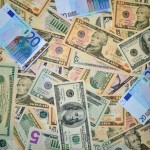Australian dollar rose to highs unseen in almost one month against its US counterpart on trading Tuesday, after official data showed that house prices and business confidence in Australia increased, while the greenback was pressured before Federal Reserve Bank Chairman Janet Yellens statement.
AUD/USD touched a session high at 0.9015 at 1:05 GMT, also the pairs highest point since January 14th, after which consolidation followed at 0.9006, rising 0.63% for the day. Support was likely to be received at February 10th low, 0.8907, while resistance was to be encountered at January 14th high, 0.9054.
According to the results in a survey by National Australia Bank (NAB), the gauge of business confidence in Australia improved for the first time in four months in January to reach a reading of 8, from 6 in the preceding month.
Business conditions in the country also improved, with the corresponding gauge rising to 4 last month from a reading of 3 in December. Values above zero are indicative that the number of business entities with positive performance exceeds the number of business entities with negative results.
The index of house prices in the country climbed 3.4% during the last quarter of 2013 compared to Q3, outstripping preliminary estimates of a 3.0% gain, after in Q3 compared to Q2 prices rose 2.4%. In annual terms, house values jumped 9.3% during the fourth quarter of 2013, or the largest gain in over three years.
“The Aussie dollar cracked above the 90 level on the back of the business confidence data, and generally, sentiment for the currency is becoming less negative,” said Mitul Kotecha, the Hong Kong-based global head of foreign-exchange strategy at Credit Agricole Corporate & Investment Bank SA., cited by Bloomberg News. “The bias for the U.S. dollar is slightly weaker, and I think it looks like it’s going to be under pressure ahead of Yellen’s speech.”
Janet Yellen is expected to take a statement on monetary policy before the Banking Committee of US House of Representatives at 15:00 GMT on Tuesday for the first time, since she took over the post of Federal Reserve Bank Chairman on February 3rd. The central bank announced its decision to reduce monthly monetary stimulus by 10 billion USD to 65 billion USD at the meeting on policy in January, underscoring that labor market indicators, which “were mixed but on balance showed further improvement”, while nations economic growth has “picked up in recent quarters.” Fed policymakers are to hold their next meeting on March 18th-19th.
Additionally, retail sales in the United States probably remained flat in January compared to December, according to preliminary estimates, after a month ago they rose 0.2%. The Census Bureau is expected to release the official numbers on February 13th.
Meanwhile, the Aussie was higher against the euro, with EUR/AUD cross down 0.56% on a daily basis to trade at 1.5166 at 7:35 GMT. AUD/NZD pair was gaining 0.20% to trade at 1.0847 at 7:37 GMT, after touching a daily high at 1.0856 at 3:05 GMT.
The Australian currency has appreciated 1.65% this year versus a basket of nine developed-nation currencies, which are tracked by Bloomberg Correlation-Weighted Indexes, or the largest advance following Japanese yen’s 3.9% gain and New Zealand dollar’s 1.73% climb. The US dollar has risen 0.6% since December 31st.





